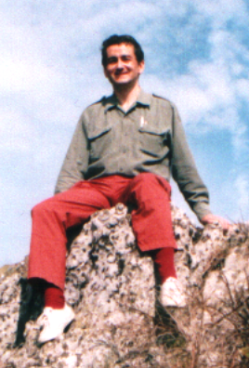 As the Society’s awards ceremony draws near, David Nowell thinks it is high time that geological maps should be put on the map.
As the Society’s awards ceremony draws near, David Nowell thinks it is high time that geological maps should be put on the map.
Geoscientist 19.5 May 2009
Though William Smith, first winner of the Wollaston Medal, stands alongside Charles Darwin as a recipient of the most prestigious accolade awarded by the Geological Society, most researchers omit geological maps from their cited references. Had the publishers of his proposed book not gone bankrupt, Smith might perhaps have appeared today on British banknotes, alongside Darwin, Faraday and Elgar. Such is the power of the written word (or note) compared to showing the distribution of distinct rock types after the crucial insight that the varied fossil types found in different sediments are unique time markers. Yet without this, there would have been no Origin of Species.
Like music, maps contain a great deal of information beneath superficial simplicity - if only you take the trouble to decode them. Compared to conference abstracts and other written flotsam and jetsam, geological maps are far more significant sources. While they underpin many figures, rather than cite them directly authors will leave a trail of references to other papers in which often sketchy maps get adapted and corrupted in the process. Poor diagrams are often compounded by a lack of coordinates and grid references which makes building upon these results with additional techniques and observations much harder, despite this being an essential part of the scientific method. Very occasionally, hiding locations is justified - in which case it should be clearly stated that the details have been lodged with an independent body, even if they are sealed for 50 or 100 years.
Worse still, a lack of citation means policy makers - and even surveys - don’t value geological mapping, as funding bodies are often swayed by simplistic statistics as indicators of research quality. We all know narrow self-citing cliques, or authors who publish three or four short repetitive papers, when one or two would do. Bizarrely, when poor research cannot be overlooked, citation is assumed to be positive while others may have flaws but contain useful information. Offshore surveys have even been published without considering their implications for the nearby coast or failing to notice that their results contradict published maps - in which case why?
With talk of an Outer Hebrides alternative energy hub, given their tremendous potential for wave, wind and tidal power, objective mapping of the islands’ superficial deposits and shallow offshore waters is desperately needed in order to judge objectively which schemes will be worth backing, rather than relying on narrowly focused data from their proponents. Thus apparently obscure and mundane work can rapidly go from being esoteric to prudent economics. The building of Milton Keynes started with a special survey, and yet the whole “ecotowns” debate has been conducted in a geological vacuum. Even though complete 1:50,000 coverage of Britain draws near, many sheets still need overhauling, and even then society will still require geologists with detailed understanding of the likely ground conditions within our regions in order to maintain this database and provide impartial support and advice to government and citizens and business alike.